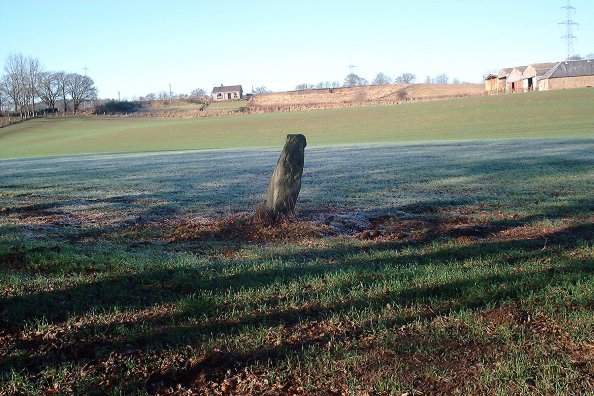






Best visited by taking the Scarth road from Luncarty and parking at the side of the river Tay. Follow the path south along the river for about 1 mile. The stone stands at the back of Denmarkfield farm next to the river. A few cup marks on the top of the stone and a much later axe shaped carving on the side.
I don’t know where Talorcan got his story from, but it’s not the one I know.
The King’s Stone marks the spot where a Scottish peasant farmer was ennobled following the Battle of Luncarty, c 990 AD. He and his sons assisted the Scots forces, by blocking the flight of some of the Danes using a large yoke, allowing them to be cut down by the pursuing Scots. Exhausted by his endeavours, the elderly man sat with his back to the stone, puffing and panting – “Hey, hey”. The King, impressed by his efforts, was alleged to have said “Hech hey, say ye, and Hay shall ye be”. He was gifted the lands between the Hawk Stane and the Falcon Stone for his efforts.
I spoke to the farmer here today, and that’s the story he was told by his grandfather. He even pointed to the low ridge to the north of the stone, and told me that he was told this was the hill the Scots forces charged down in pursuit of the Danes.
The Kings stone at Denmarkfield is said to mark the burial of a Danish king. The story goes that a Viking raiding party were marching to attack Dunkeld, in the dark one of them shouted out as he stepped on a thistle and gave away their presence to the local Picts who gathered together and defeated them.
This, it is claimed is how the thistle became the national emblem of Scotland.
Steve du Cane
View the site on the old OS map.




































































































































